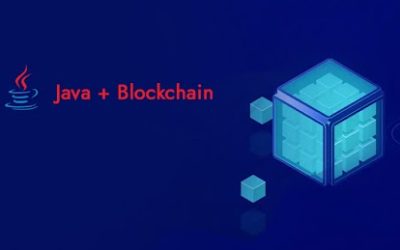Figuring out how to supervise engineers through challenging projects by furnishing them with open doors and support is vital to better execution, commitment, and productivity.
According to a recent survey, developer teams with team spirit are 21% more productive than teams with low engagement. But how can engagement be increased? How can you better manage your tech group’s necessities? How can remote dev teams be managed effectively?
Based on our experience working as a remote team and assisting businesses in successfully scaling and managing their IT teams, we will examine the best strategies for managing Hired Java Developers in this article.
Whether you are a team lead or the boss of young teams of remote developers, this guide will help you achieve optimal support with your team by your side.
Create Your Unique Team of Talents
The groundwork of an actual remote Java development team begins with the recruiting system. Choosing people with the right specialized abilities is fundamental, yet similarly significant is employing engineers you trust. You must have a lot of faith in your team’s abilities and commitment in the absence of physical supervision. Developing a remote development team requires assessing specialized and delicate abilities such as correspondence, independence, and cooperation.
Create an Exceptional Onboarding Experience
Onboarding lays the preparation for an engineer’s excursion inside a remote group. A positive onboarding experience can fundamentally influence representative maintenance and fulfillment. A comprehensive onboarding plan should go beyond standard procedures, including a thorough overview of work agreements, precise role expectations, instruction on the company’s vision and mission, and a hands-on introduction to the first project. Moreover, consolidating mingling open doors with colleagues encourages a feeling of having a place.
The foundation of successful remote development teams is an effective workflow with clearly defined objectives and goals. Separating undertakings into sensible achievements, appointing liabilities in light of mastery, and consolidating ordinary registrations through stand-up gatherings guarantee straightforwardness and responsibility. Clear documentation of coding rules, best practices, and cycles becomes much more crucial in a remote environment. Real-time collaboration requires careful consideration of different time zones and preparation.
Welcome Your Team
- Tailor invite messages from key colleagues.
- Be enthusiastic about special skills.
Far-reaching Direction
- Examine the organization’s long-term vision and values.
- Let them understand the needs of their roles and projects.
Detailed Work Arrangements
- Explain working hours and correspondence conventions.
- Establish clear rules for working from home.
Make the Job Description Clear
- Make the job description clear.
- Highlight the key and major expectations of the project.
Introduction to the Guided Project
- Make the company’s regulations clear for the newcomers.
Virtual Office Tour
- Introduce them to digital workspace and tools.
- Allow them to explore new virtual platforms.
Time For Team Interaction
- Make plans for team-building activities and virtual coffee breaks.
- Encourage early friendships and connections.
Persistent Help
- Make it easy to get questions answered and advice.
- Commit to ongoing support throughout.
Listen To Feedback
- Encourage new developers to discuss onboarding ideas.
- Show obligation to nonstop improvement.
An Overview of the Company’s Culture
- Tell stories and talk about the organization’s culture.
- Promote interaction with seniors and juniors.
Align mentors and Buddies
- Execute mentorship or amigo frameworks.
- Give go-to help to questions and directions.
Last But Not Least- Be Flexible
- Appreciate innovative feedback and give them action.
- View onboarding as a dynamic, developing interaction.
Embracing a Clear, Goal-specific Methodology
Continuous work production is the backbone of successful remote development teams. Accentuating level group elements, characterizing feasible programming highlights, leading day-to-day stand-up gatherings, and executing ceaseless development cycles add to expanded efficiency. The Spry structure adjusts well to remote work elements, advancing compelling correspondence, cooperation, and the convenient conveyance of ventures.
Adopting New Tools
Successful communication in remote settings is central, and using the right tools is critical. Clear correspondence rules, normal video gatherings, and the utilization of devoted stages for explicit purposes (e.g., Zoom for gatherings, Google Meet for fast updates) establish an organized correspondence climate. To improve team communication and avoid misunderstandings, it’s best to prioritize clarity and comprehension over over-communication.
Balanced Work-Life Balance
When managing remote Java developers, it is essential to recognize the significance of work-life balance. Burnout can be avoided by laying out clear plans for getting work done regarding off-hours and keeping away from steady correspondence beyond assigned work hours. By acknowledging limitations as necessary, colleagues foster a sense of independence and a better workplace.
Conduct Regular Feedback and Performance Review Sessions
Through these reviews, it is easier to comprehend the accomplishments of both individuals and teams. Continuous improvement is possible by conducting reviews, incorporating feedback from a 360-degree perspective, and formulating actionable development plans based on feedback. A positive and constructive culture for remote work can be created by recognizing and celebrating accomplishments and addressing areas for development.
Foster Team Spirit in A Virtual World
Making serious areas of strength for a soul in a remote setting requires easy settling. Empowering eye-to-eye collaborations during virtual gatherings, arranging virtual festivals for birthday events and accomplishments, and perceiving and valuing the difficult work of colleagues add to building brotherhood. Virtual water cooler meetings and other innovative thoughts assist with overcoming any barrier and improve the group’s assurance.
Here are some easy tips
Video Meetings
- Turn on cameras for face-to-face interactions
Virtual Festivals
- Make online blissful hours or birthday festivities.
- Keep the group associated with virtual water cooler thoughts.
Appreciation Motions
- Perceive difficult work in broad daylight channels.
- Send a congrats or a little gift card.
Concerning Well-Being
- Consistently check in with a basic “What’s going on with you?”
- Show certifiable interest in colleagues’ lives.
Allow Game Time
- Integrate tomfoolery and fast internet games.
- Engage in casual activities to bolster connections.
Common Accomplishments
- Celebrate group wins on a typical stage.
- Lift the general mood by recognizing aggregate achievement.
Personal Relationships
- During meetings, encourage casual discussions.
- Permit time for individual updates to construct compatibility.
Permitting Independence for Designers
Believing designers to do their responsibilities with micromanagement is fundamental for remote groups. Underlining results over consistent oversight cultivates a culture of independence and development. Perceiving that an engineer may not be coding for a set number of hours daily and understanding the significance of results over processes add to a positive remote work insight.
Providing opportunities for professional development is crucial for retaining top talent. Effective strategies include regular training sessions, mentoring programs, assistance with certifications, internal mobility, career path planning, and performance-based promotions. A culture of continuous learning and innovation is fostered by allowing developers to work on individual projects that align with company interests.
Open Correspondence: Getting Clarification on Some Things and Seeing Requirements
Focusing on open correspondence is urgent for figuring out individual requirements and goals. Engineers can use standard one-on-one meetings to express their interests, ask for direction, and examine assumptions. CEOs can create a climate that fosters individual and expert development by effectively tuning in and catering to individual requirements.
Understanding Team Dynamics
It is essential for effective management to recognize and respect the distinctive dynamics of a remote Java development team. A harmonious work environment is possible by understanding team dynamics, preferred methods of communication, and frequency of meetings. Management strategies need to be tailored to individual preferences to maintain a productive team dynamic and prevent burnout.
Inspecting Applicable Measurements for Constant Development
Characterizing and continuously monitoring Key Execution Markers (KPIs) is imperative to data-driven direction. Project objectives and business goals, for example, code quality, project completion rate, user loyalty, and bug goal time, provide significant bits of knowledge to choose such metrics. Sharing these metrics with the development team creates a feedback loop that fosters collaboration and a culture of continuous development.
Managing Blended Development Teams: Tips for Progress
In situations where both in-office and remote groups exist together, straightforwardness in processes becomes central. Both teams can benefit from daily check-ins and constant communication, regardless of their location. A unified team culture is made possible by establishing ground rules, setting expectations for response times, and incorporating remote workers into office customs. The opportunity for colleagues to interact and reinforce their cooperation is crucial during organization meetups.
Final Words
Effectively monitoring the remote Java development team requires a sensible and core mechanism. Organizations can build and keep high-performing teams by prioritizing trust, efficient onboarding, clear communication, and ongoing support for professional development. By embracing the challenges of remote work with these methodologies, efficiency, and proficiency can be assured, and colleagues can feel fulfilled and prosperous. As organizations keep on exploring the developing scene of remote work, the execution of these techniques will assume an essential part in the outcome of remote Java development teams.







